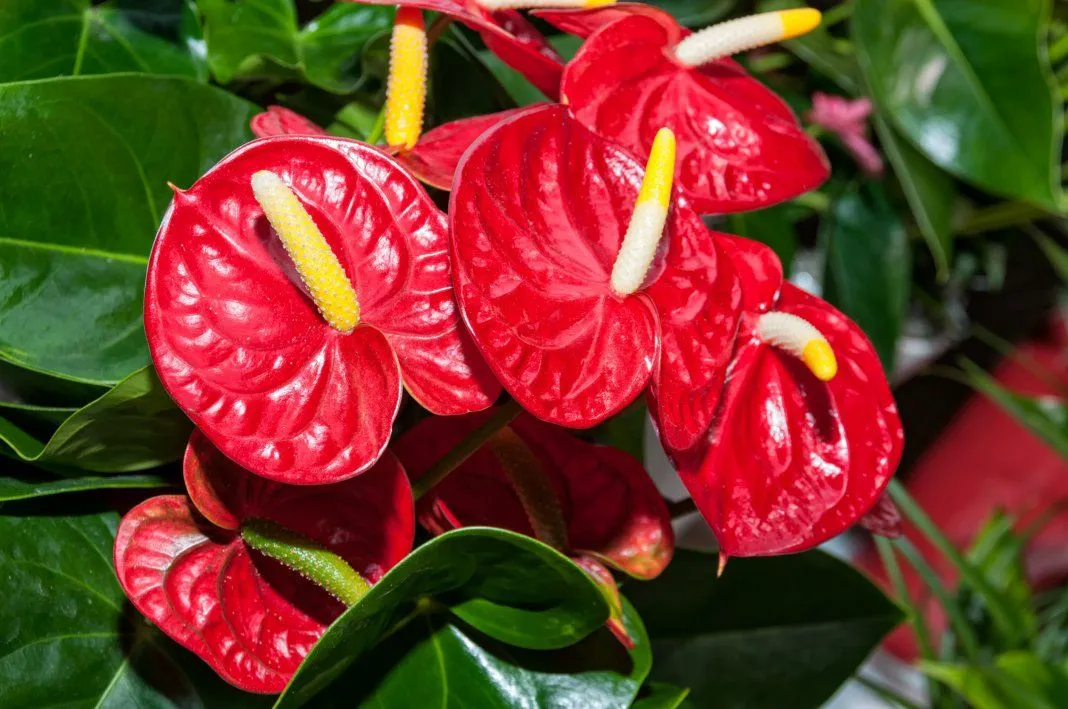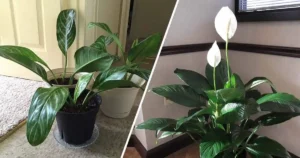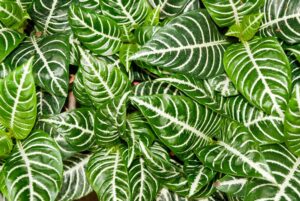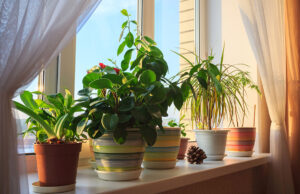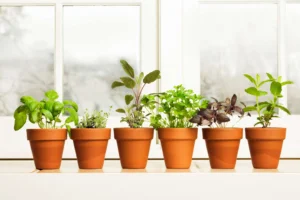Anthuriums, often known as flamingo flowers or painter’s palette, are stunning tropical houseplants that have gained immense popularity among indoor gardening enthusiasts. Native to the rainforests of Central and South America, these exotic beauties are prized for their vibrant, heart-shaped flowers and glossy foliage.
As part of the Araceae family, anthuriums are not just visually appealing; they’re also excellent air-purifying plants, making them a perfect addition to any home or office space. Whether you’re a seasoned plant parent or a beginner in the world of tropical houseplants, learning about anthurium care can help you cultivate these gorgeous plants successfully.
On This Page
Popular Anthurium Varieties for Indoor Growing
When it comes to growing anthuriums indoors, several varieties stand out:

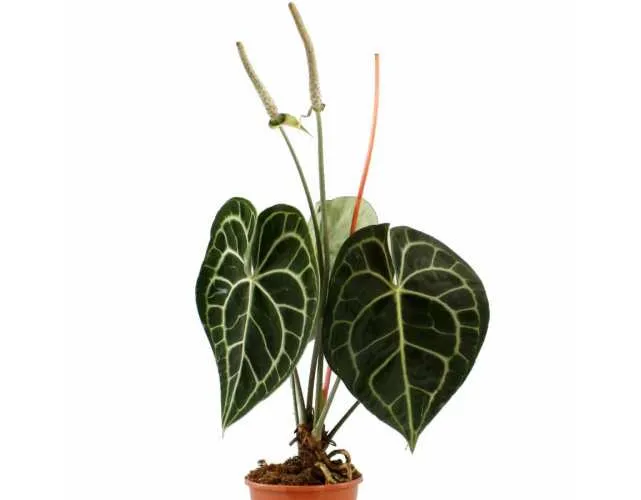
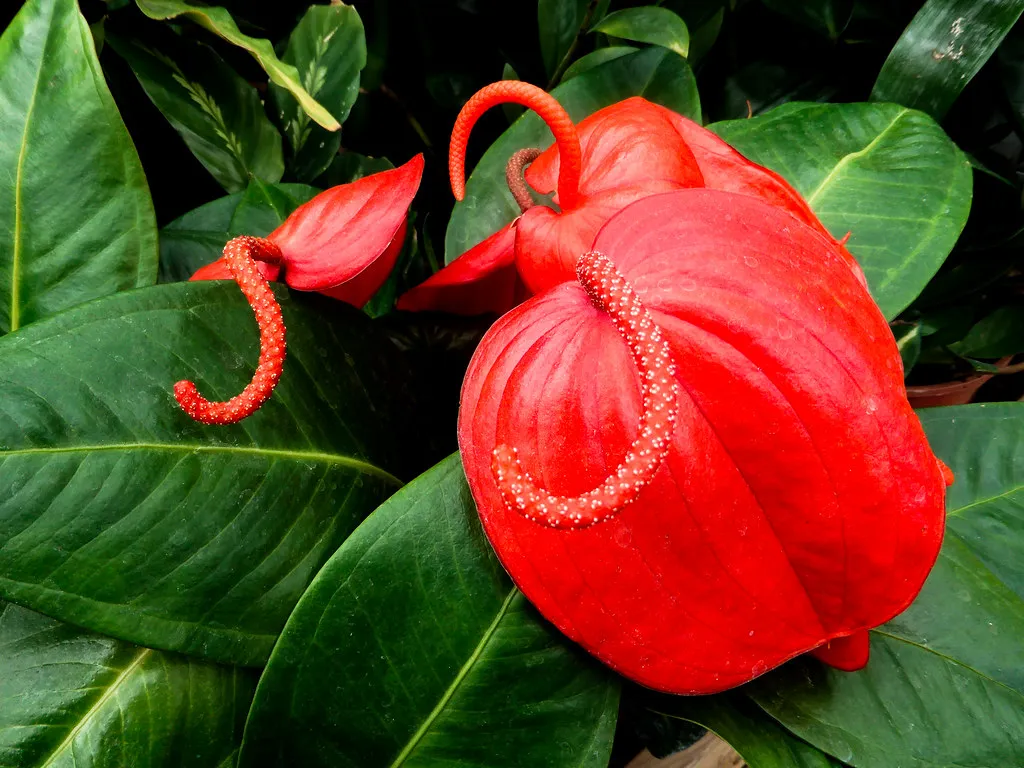

- Anthurium andraeanum: The most common species, known for its bright red flowers
- Anthurium scherzerianum: Features twisted spadix and smaller flowers
- Anthurium crystallinum: Grown primarily for its striking foliage
- Anthurium clarinervium: Known for its velvety, heart-shaped leaves
Each of these anthurium varieties brings its unique charm to your indoor garden, catering to different aesthetic preferences and care levels.
Why Anthuriums are Great Houseplants
Anthuriums have become increasingly popular as houseplants for several reasons:
- Long-lasting blooms: Anthurium flowers can last for weeks or even months
- Air-purifying qualities: They help remove toxins from the air
- Low maintenance: With proper care, anthuriums are relatively easy to maintain
- Versatility: They can thrive in various indoor environments
- Year-round beauty: With the right care, anthuriums can bloom throughout the year
1. Choosing the Right Anthurium
Selecting the perfect anthurium for your space is crucial for successful anthurium care. Consider the following factors:
Factors to Consider
- Available space: Anthuriums can grow up to 2-3 feet tall and wide
- Light conditions: They prefer bright, indirect light
- Maintenance level: Some varieties require more attention than others
- Climate: Consider your home’s temperature and humidity levels
Popular Anthurium Species for Beginners
If you’re new to growing anthuriums, start with these beginner-friendly species:
- Anthurium andraeanum: Adaptable and forgiving
- Anthurium scherzerianum: Compact and easy to care for
- Anthurium hookeri: Tolerant of various light conditions
Where to Buy Healthy Anthurium Plants
To ensure you’re starting with a healthy plant:
- Local nurseries: Often have a good selection and knowledgeable staff
- Reputable online plant shops: Offer a wide variety but check reviews first
- Garden centers: May have seasonal availability
- Specialty tropical plant stores: Great for finding rare anthurium varieties
When selecting your plant, look for:
- Vibrant, unmarked leaves
- Healthy roots (if visible)
- No signs of pests or diseases
2. Planting Your Anthurium
Proper planting is crucial for anthurium care and sets the foundation for healthy growth.
Selecting the Right Pot and Soil Mix
Choose a pot that:
- Has drainage holes to prevent water logging
- Is 1-2 inches larger than the current root ball
For soil, use a well-draining mix:
- 1 part peat moss
- 1 part pine bark
- 1 part perlite
This mix provides the aeration and moisture retention that anthuriums need.
Step-by-Step Planting Guide
- Fill the new pot 1/3 full with the prepared soil mix
- Gently remove the anthurium from its current pot
- Place the plant in the new pot, ensuring it’s at the same depth as before
- Fill around the roots with more soil mix, pressing gently to remove air pockets
- Water thoroughly until water drains from the bottom
- Place in a suitable location with bright, indirect light
Best Time to Plant or Repot
The ideal time for planting or repotting anthuriums is:
- Spring or early summer, when the plant is entering its active growth phase
- When the plant has outgrown its current pot (roots coming out of drainage holes)
- If the soil is degraded or compacted
Avoid repotting during the plant’s dormant winter period unless absolutely necessary.
3. Anthurium Care Essentials
Mastering the basics of anthurium care will ensure your plant thrives and produces beautiful blooms year-round.
Light Requirements
Anthuriums prefer:
- Bright, indirect light
- Protection from direct sunlight, which can scorch leaves
- 6-8 hours of filtered light daily
Ideal locations include:
- Near east or west-facing windows
- A few feet away from south-facing windows
- Under grow lights if natural light is insufficient
Watering Anthuriums
Proper watering is crucial for anthurium health:
- Water when the top inch of soil feels dry
- Use room temperature, filtered water if possible
- Water thoroughly until it drains from the bottom
- Empty the drainage tray to prevent root rot
- Reduce watering in winter when growth slows
Temperature and Humidity Needs
Anthuriums thrive in conditions similar to their tropical origins:
- Temperature: 70-90°F (21-32°C)
- Avoid cold drafts and sudden temperature changes
- Humidity: 60-80%
To increase humidity:
- Use a pebble tray filled with water
- Group plants together
- Use a humidifier in dry environments
Fertilizing Tips and Frequency
Feed your anthurium to encourage healthy growth and blooming:
- Use a balanced, water-soluble fertilizer (e.g., 20-20-20)
- Fertilize every 6-8 weeks during the growing season
- Dilute the fertilizer to 1/4 strength to avoid over-fertilization
- Skip fertilizing in winter when growth slows
By following these essential care tips, you’ll be well on your way to successfully growing anthuriums and enjoying their beautiful flowers year-round.
4. Pruning and Maintenance
Regular pruning and maintenance are essential for keeping your anthurium houseplant healthy and vibrant.
When and How to Prune
Prune your anthurium:
- When leaves turn yellow or brown
- To control size and shape
- To remove spent flowers
Pruning steps:
- Use clean, sharp scissors or pruning shears
- Cut yellowed or damaged leaves at the base of the stem
- Remove spent flowers by cutting the entire flower stalk at the base
- Trim leggy stems to encourage bushier growth
Cleaning Leaves for Optimal Health
Clean anthurium leaves regularly to ensure they can photosynthesize effectively:
- Dust leaves gently with a soft, damp cloth
- For stubborn dirt, use a mixture of mild soap and water
- Rinse leaves thoroughly to remove any soap residue
- Avoid using leaf shine products, which can clog the plant’s pores
Supporting Anthurium Flowers
Large anthurium flowers may need support:
- Use thin bamboo stakes to prop up heavy blooms
- Secure flowers to stakes with soft plant ties
- Adjust supports as the plant grows
5. Anthurium Propagation
Propagating anthuriums allows you to expand your collection or share with friends.
Division Technique
- Remove the plant from its pot
- Gently separate the root ball into sections, each with several leaves
- Ensure each division has healthy roots
- Pot each section in fresh, well-draining soil
- Water thoroughly and place in a warm, humid spot
Stem Cutting Propagation
- Choose a healthy stem with at least two leaves
- Cut the stem below a node (where leaf meets stem)
- Remove lower leaves, leaving the top 1-2 leaves
- Dip the cut end in rooting hormone (optional)
- Plant the cutting in a small pot with moist, well-draining soil
- Cover with a clear plastic bag to increase humidity
- Place in bright, indirect light and keep soil moist
Tips for Successful Propagation
- Maintain high humidity around new cuttings or divisions
- Keep soil consistently moist but not waterlogged
- Be patient – anthurium propagation can take several weeks
- Gradually acclimate new plants to normal conditions
6. Troubleshooting Common Issues
Even with the best anthurium care, issues may arise. Here’s how to address them:
Identifying and Treating Pests
Common pests include:
- Spider mites: Tiny pests that cause stippling on leaves
- Treatment: Increase humidity, use insecticidal soap or neem oil
- Mealybugs: White, cottony insects on leaves and stems
- Treatment: Remove with alcohol-soaked cotton swab, use insecticidal soap
Addressing Diseases
- Root rot: Caused by overwatering
- Prevention: Ensure proper drainage, avoid overwatering
- Treatment: Remove affected roots, repot in fresh soil
- Leaf blight: Fungal disease causing dark spots on leaves
- Prevention: Avoid wetting leaves when watering
- Treatment: Remove affected leaves, apply fungicide if severe
Fixing Common Problems
- Yellowing leaves: Often due to overwatering or nutrient deficiency
- Solution: Adjust watering schedule, fertilize appropriately
- Brown leaf tips: Usually caused by low humidity or over-fertilization
- Solution: Increase humidity, flush soil to remove excess salts
- Lack of blooms: Typically due to insufficient light or improper fertilization
- Solution: Move to brighter location, adjust fertilizing routine
7. Decorating with Anthuriums
Anthuriums aren’t just beautiful plants; they’re also versatile decorative elements.
Styling Tips for Various Home Decor Styles
- Modern: Place in sleek, minimalist pots; use as focal points
- Tropical: Pair with other lush plants for a jungle-like atmosphere
- Bohemian: Mix with eclectic decor and colorful pots
- Scandinavian: Use white pots to contrast with colorful flowers
Pairing with Other Houseplants
Anthuriums pair well with:
- Philodendrons (similar care requirements)
- Ferns (for a lush, tropical look)
- Orchids (complementary exotic appeal)
- Pothos (easy-care trailing plant)
Using Anthuriums in Floral Arrangements
Anthurium flowers make stunning cut flowers:
- Last up to three weeks in a vase
- Change water every few days to prolong life
- Combine with tropical foliage for dramatic arrangements
8. Seasonal Care
Adjust your anthurium care routine throughout the year for optimal growth.
Adjusting Care Routines for Different Seasons
Spring/Summer:
- Increase watering frequency
- Fertilize regularly
- Monitor for pest issues
Fall/Winter:
- Reduce watering
- Stop or reduce fertilization
- Maintain consistent temperatures
Preparing Anthuriums for Winter
- Move plants away from cold windows
- Reduce watering frequency
- Increase humidity with a humidifier or pebble tray
- Protect from drafts and sudden temperature changes
Encouraging Blooming Cycles
To promote year-round blooming:
- Maintain consistent bright, indirect light
- Keep temperatures between 70-90°F (21-32°C)
- Fertilize regularly during growing season
- Ensure proper humidity levels
9. Advanced Anthurium Growing Techniques
For enthusiasts looking to take their anthurium care to the next level:
Creating the Perfect Microclimate
- Use a terrarium or glass cabinet to control humidity
- Install grow lights for consistent, ideal lighting
- Use a small fan for air circulation to prevent fungal issues
Experimenting with Different Potting Mediums
Try alternative mediums like:
- Sphagnum moss
- Coconut coir
- LECA (Lightweight Expanded Clay Aggregate)
Hybridization for Enthusiasts
- Learn about anthurium flower anatomy
- Hand-pollinate flowers using a small brush
- Collect and sow seeds from successful crosses
- Be patient – it can take years to see results
10. Anthurium Fun Facts and Trivia
- Symbolism: Anthuriums symbolize hospitality and abundance
- There are over 1000 species of anthuriums in the wild
- The largest anthurium leaf recorded was over 6 feet long!
- Anthuriums are mildly toxic if ingested, so keep away from pets and children

Conclusion
Growing anthuriums can be a rewarding experience for any plant enthusiast. With proper care, these tropical beauties will thrive and bring a touch of exotic elegance to your home. Remember the key points of anthurium care:
- Bright, indirect light
- Well-draining soil
- Consistent moisture
- High humidity
- Regular fertilization
With patience and attention, you’ll soon be enjoying the stunning, long-lasting blooms of your very own anthurium plants.
How often should I water my anthurium?
Water when the top inch of soil feels dry, typically every 1-2 weeks.
Why aren’t my anthuriums blooming?
Lack of light, improper fertilization, or incorrect temperatures can prevent blooming.
Can anthuriums grow in low light?
They can survive in low light but won’t thrive or bloom. Bright, indirect light is best.
How do I increase humidity for my anthurium?
Use a pebble tray, humidifier, or group plants together to increase humidity.
Are anthuriums difficult to care for?
With the right conditions, anthuriums are relatively low-maintenance plants.
